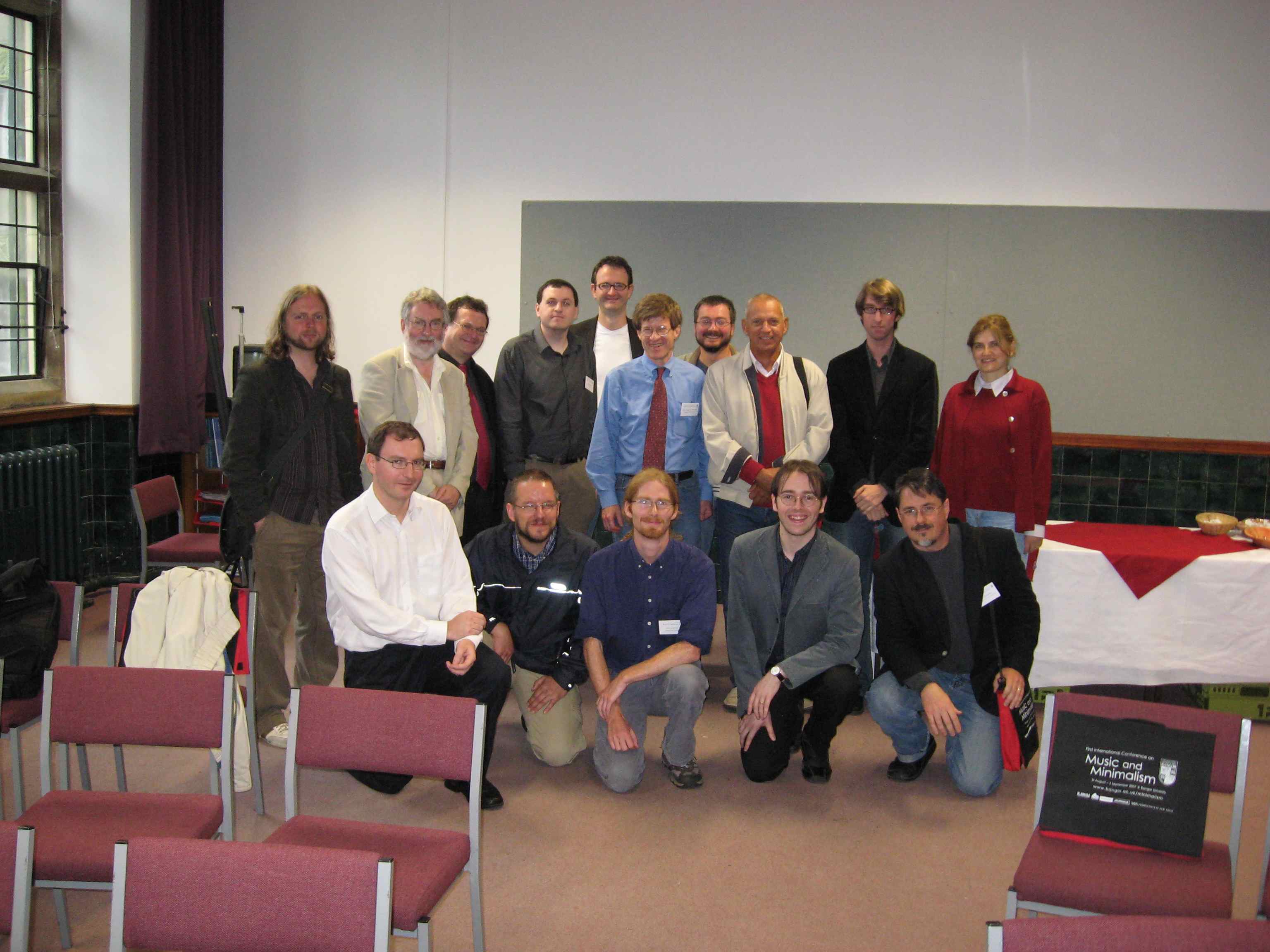The Menai Bridge, built in 1826:

This morning in a book store in Wales I found a fat, impressive tome titled, “Hanes Cerddoriaeth y Gorllewin.” It meant nothing to me until I read down to the authors’ names: Grout and Palisca. Yes, that’s right, the Grout History of Music, that scourge of music undergrads, is translated into Welsh. (“Cerddoriaeth” is Welsh for “music.”) At £25, it was almost worth buying to display prominently in my office, but too heavy to lug around in my suitcase.

The FIrst International Conference on Minimalism and Music ended impressively Sunday morning with a session of papers looking toward the future. David McIntire of the University of Missouri at Kansas City gave a paper, “Terminology and Meaning in a Post-Minimalist Style:The Case of Totalism,” in which he quite accurately recounted, with photos and score examples in a Powerpoint presentation, the history of the movement’s recognition so far – including a photo of Rudy’s Bar in New York where the word was coined! It was the first time I’ve ever seen anyone besides myself talk on the subject, and David reports widespread enthusiasm for totalism among UMKC students.
Local composer Geraint Lewis was charged with the obligatory summation of minimalist activity within Welsh music, and since there’s hardly been any, his sense of humor about it was a blessing. (But can you name the three most famous recent Welsh composers? Grace Williams, Daniel Jones, David Wynne.) Tara Wilson closed with a paper on Russian postminimalists (Martynov, Batagov, and others) that insightfully differentiated their attitudes from those of their American counterparts. Noticeable, she said, and it accorded with my experience of the music, were the Russians’ lack of interest in acoustic phenomena, their ironic use of tonal materials as historic references rather than a neutral markers within a process, and the practice of kryptophonia: the derivation of melodies from secret messages, sometimes via correspondences between pitches and letters in phrases. I immediately added the word to my vocabulary, but first mistook her to say kleptophonia, which also offers intriguing possibilities.
It had never occurred to me how helpful it might be to hear other people analyze so much of the music I’m specifically interested in. Usually at an academic music conference I’m lucky if I can find two or three papers of any particular interest at all, but every paper on this entire conference, if not all necessarily stellar, was on a subject dear to my heart. I’ve been working alone in the analysis of minimalist and postminimalist music for so long that I had forgotten that it was possible to learn from colleagues, that for some things five, or thirty, heads are better than one. Others must have felt much the same way, for after the final session, organizers Pwyll ap Sion (author of a new book on Michael Nyman) and Tristian Evans gathered together all who’d stay for a discussion of the conference’s possible future history. We spontaneously formed the Music and Minimalism Society, members pictured below (except for me who’s taking the photograph):

and agreed that the conference should be held every two years, alternating between Europe and the U.S. As a member of the new steering committee, I’ll keep you apprised of plans. Meanwhile, let it be noted that minimalism now possesses a strong and undeniable base of support and scholarship in international musical academia. And we ain’t going back.
Meanwhile, back in London: TUBE STRIKE! Just spiffy.
